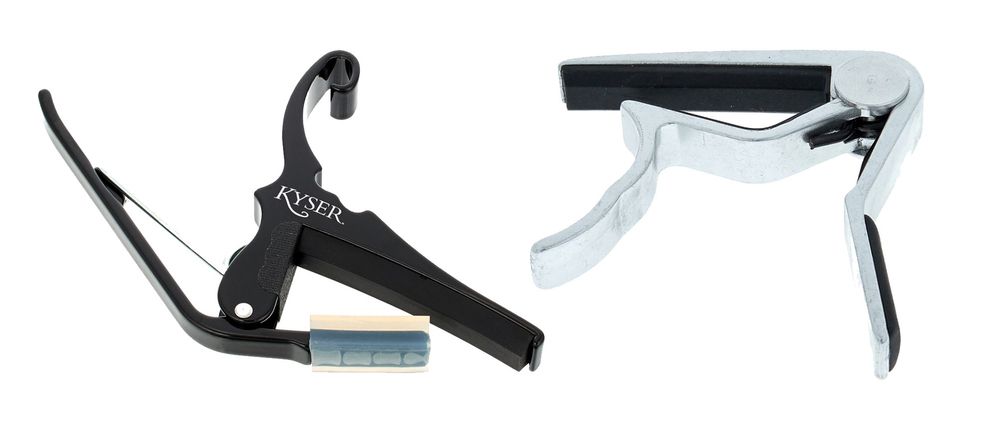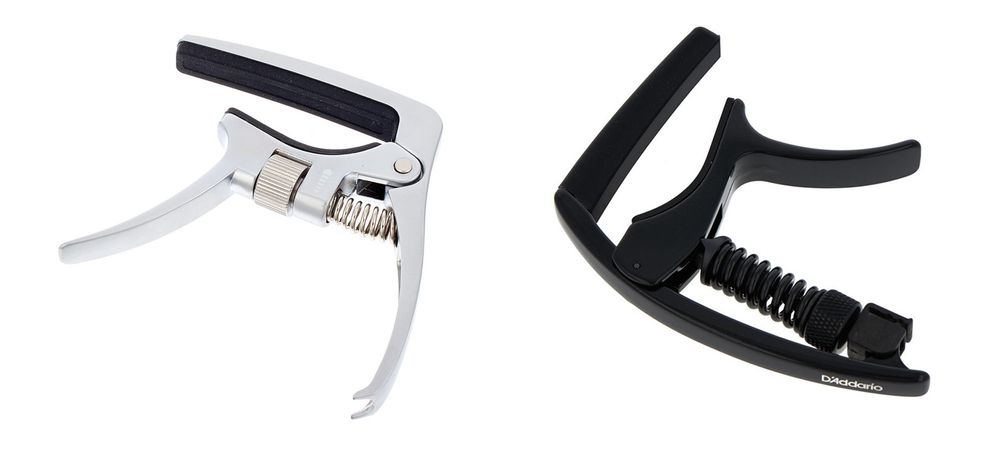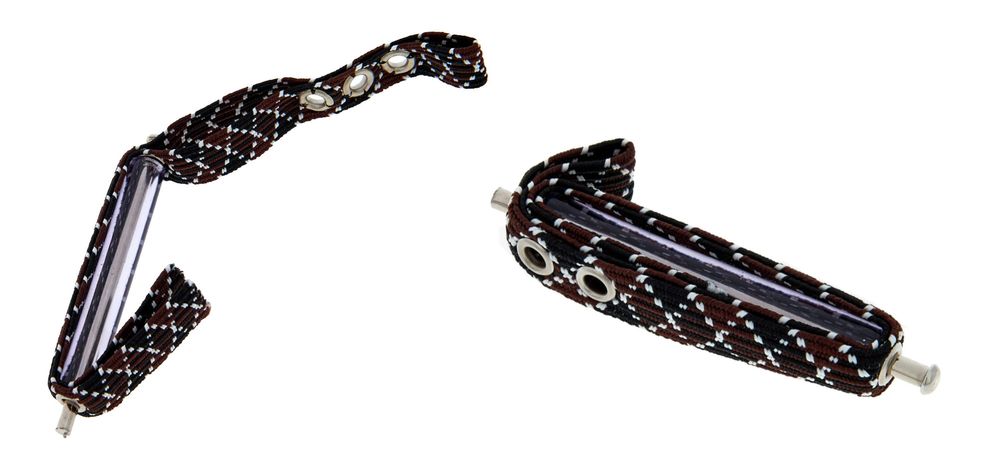4. What types of capos are there?
Capos come in various designs. Here are the most common types:
Spring-Loaded Capos
With these type of capo, sliding along the neck is as smooth as butter. The built-in spring keeps it snug without constant readjustment, and swapping between guitars is lightning-fast. Just clamp it to your headstock when you're done. Yet, dialing in that spring tension just right is crucial. Too strong, and your strings might stretch excessively, throwing off your tuning. It’s your go-to for quick changes, but it might lose some flexibility on guitars with varying neck thicknesses and different-sized frets.

Item No. 133203 - Kyser Quick Change and 238927 - Harley Benton HBCA
Adjustable Tension Capos
The tension in these capos can be adjusted using a screw or a clamping mechanism, making them highly adaptable to different instruments and neck shapes. However, transitioning directly from a guitar with a thin neck, like a Strat, to a thicker acoustic guitar might require readjustment, which is a little time-consuming during a live gig. Yet, capos with adjustable tension can also be repurposed for muting strings (e.g., in the studio): When you want to mute open strings, slide one with minimal tension in the first or second fret and you're done! Another advantage of these capos is their compact size.

Item No. 121652 - Shubb C1, Product No. 248408 - D’Addario PW CP 07, and Item No. 466594 - G7th Performance 3
Capos with Both Spring and Adjustable Tension
Several capos combine both mechanical functions. They typically have a spring mechanism but also allow for adjusting the spring tension using a small screw. This feature is extremely helpful when changing capos swiftly, especially for guitars with thicker necks, where the tension of a standard spring-loaded capo might be too strong, requiring frequent retuning.

Item No. 426289 - Harley Benton inTune Tension Capo and Item No. 292116 - D'Addario Capo Tri Action PW CP 09
Rubber Band Capos
Capos secured by a rubber band offer a more affordable and straightforward alternative: they consist of a single arm placed on the fretboard. The rubber band replaces the second arm on the neck's backside, providing counter-tension. This design ensures that nothing protrudes on the neck's backside, potentially obstructing a gripping thumb.

Item No. 202282 - Dunlop Bill Russel Capo





